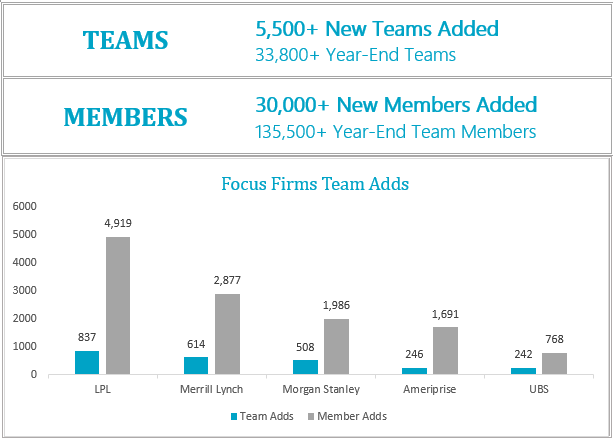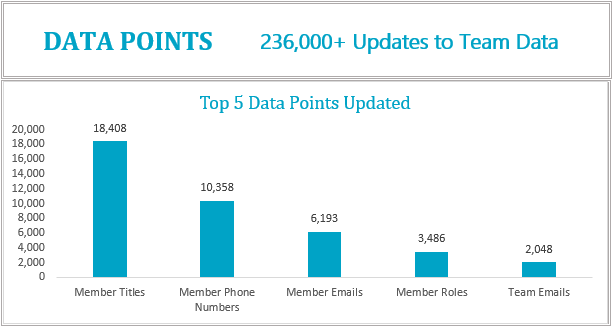Today, more advisors are members of a functional team than just a year ago. The number of advisor teams continued to grow throughout 2019. The changes in Advisor Atlas data support sole practitioners declining in 2020 and beyond as the population of teams and team members increases.
Teaming makes sense for advisors and investors for several reasons. It allows advisors to specialize and have a diversity of skills and expertise within one group. On average, advisor teams include a mix of client-facing advisors, experts in financial planning, and client support staff. Working as part of a team eases the client’s support burden and presents opportunities for economies of scale and succession planning. Teams are also more productive; we’ve seen up to double the business growth when compared to individual practitioners. Client investors benefit from access to expanded services provided by a well-structured team of experts.
Understanding where teams are forming and what roles team members play is essential as it informs asset managers about who they should be engaging with, how they should be attributing sales and activity, and where they should be focusing effort. The challenge is that teams are constantly changing; whether a team moves to another firm, the member composition of the team shifts or one or more of its members has a title or role update.
Advisor Atlas collects and maintains multiple data points on each team. With up to 35 data points, our team data includes: team name, team member roles, contact information for firm, office, and rep, and more.
Let’s look at changes we saw in Advisor Atlas data over the last year:


How to stay up to speed on advisor teams?
For an example of what Advisor Atlas team data looks like, request a sample of Advisor Atlas team data.
If you would like to subscribe to Advisor Atlas insights, we will send you a summary of all the top stats, trends, and changes we are seeing in the industry.